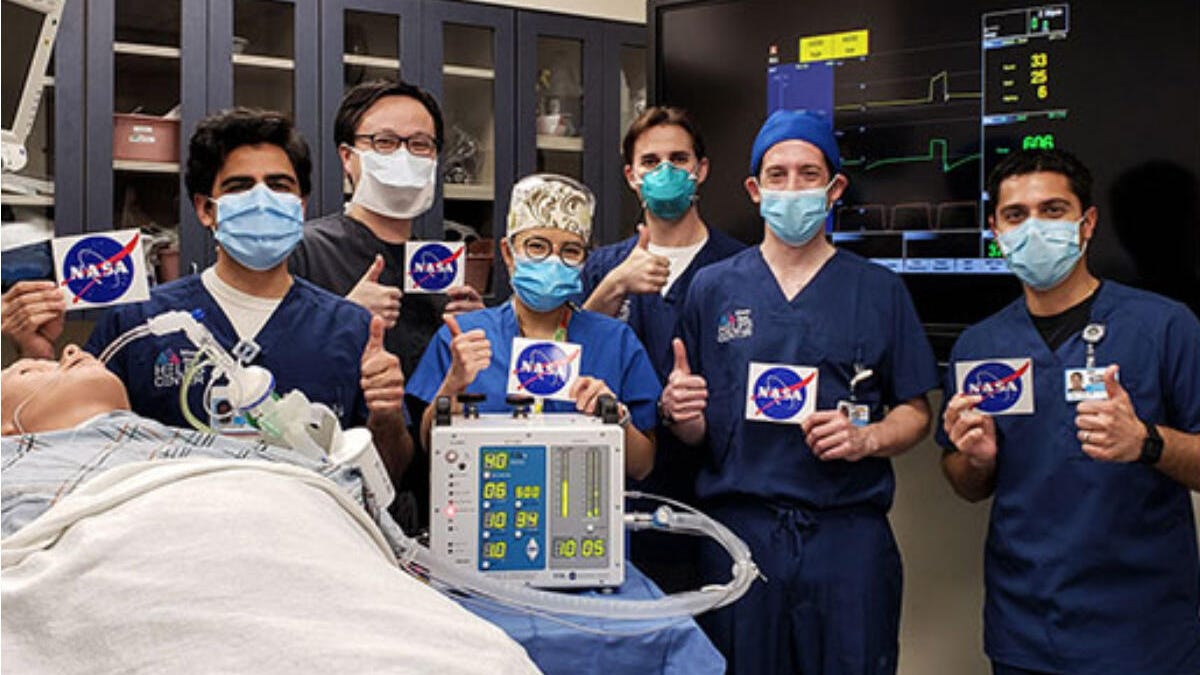FDA approves new NASA-developed ventilator for coronavirus patients
The new machine can be built faster, more easily and with fewer parts than a traditional ventilator, the space agency says.

Doctors at the Icahn School of Medicine at Mount Sinai in New York give a thumbs-up after testing a ventilator prototype developed by NASA's JPL.
The Food and Drug Administration has approved a new high-pressure ventilator designed by engineers at NASA's Jet Propulsion Laboratory in southern California, the space agency announced on Thursday. The ventilator, developed by JPL in just 37 days, made headlines last week when it passed a critical test at the Icahn School of Medicine at Mount Sinai in New York. NASA then sought and won expedited FDA approval for the device via an emergency-use authorization, a fast-track approval process developed for crisis situations.
The next step is to find manufacturers within the commercial medical industry.
"Now that we have a design, we're working to pass the baton to the medical community and ultimately patients, as quickly as possible," said Fred Farina, chief innovation and corporate partnerships officer at Caltech, which manages JPL for NASA. "To that end, we are offering the designs for licensing on a royalty-free basis during the time of the pandemic."
Although JPL normally builds spacecraft, not medical devices, engineers stepped in due to the nation's limited supply of traditional ventilators, which are needed for COVID-19 patients experiencing severe respiratory distress.
The ventilator has been named VITAL -- for Ventilator Intervention Technology Accessible Locally -- and can be built faster, more easily and with fewer parts than a traditional ventilator, according to NASA.
Coronavirus updates
"We have the potential to save human lives, people that we might know, our neighbors, our families," said Michelle Easter, a mechatronics engineer on the project. "And that intensity ... is amazing, it's amazing."
Fighting coronavirus: COVID-19 tests, vaccine research, masks, ventilators and more
See all photosUpdated April 30 at 4:30 p.m. PT: Added news that FDA has approved ventilator for emergency use.

